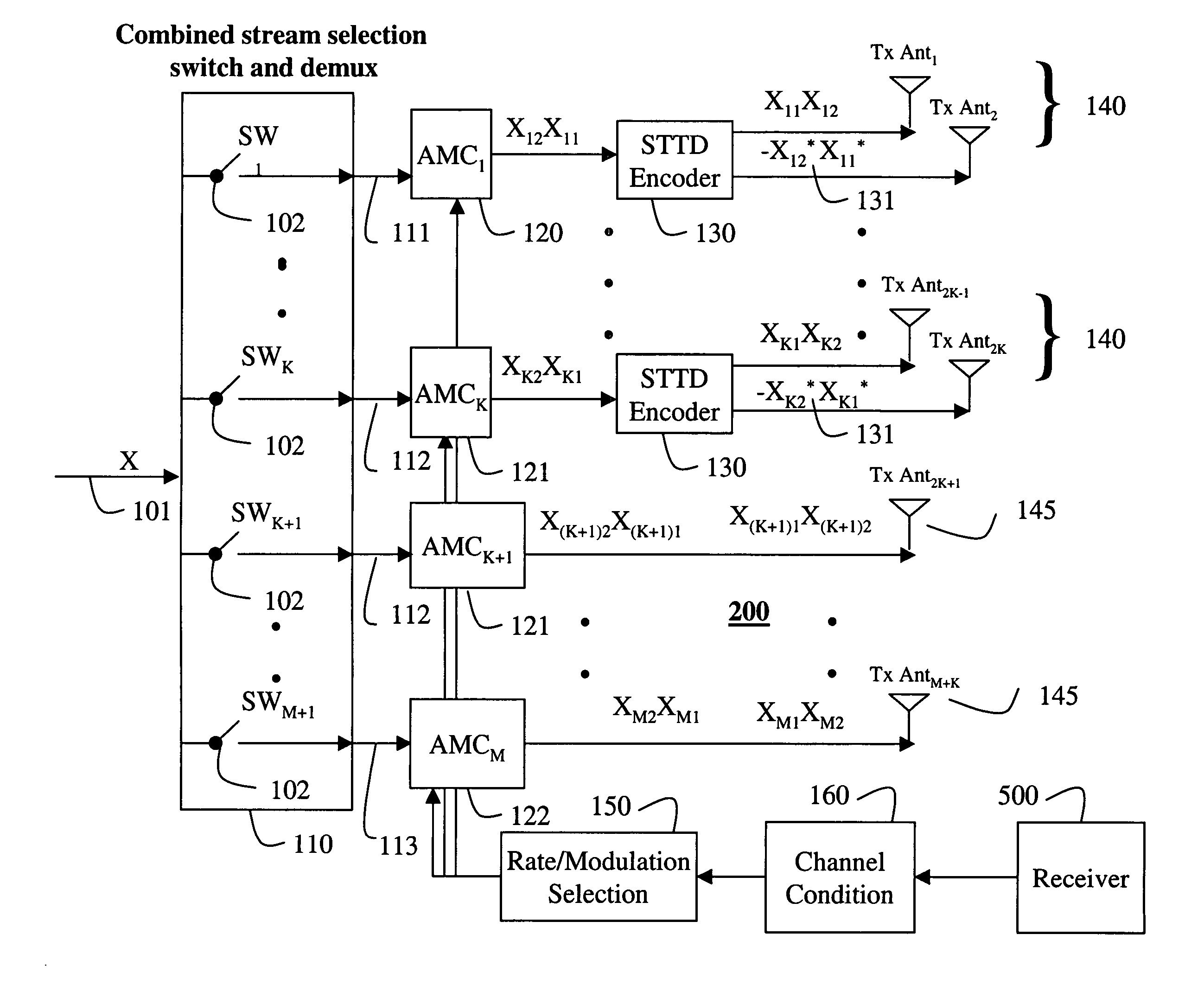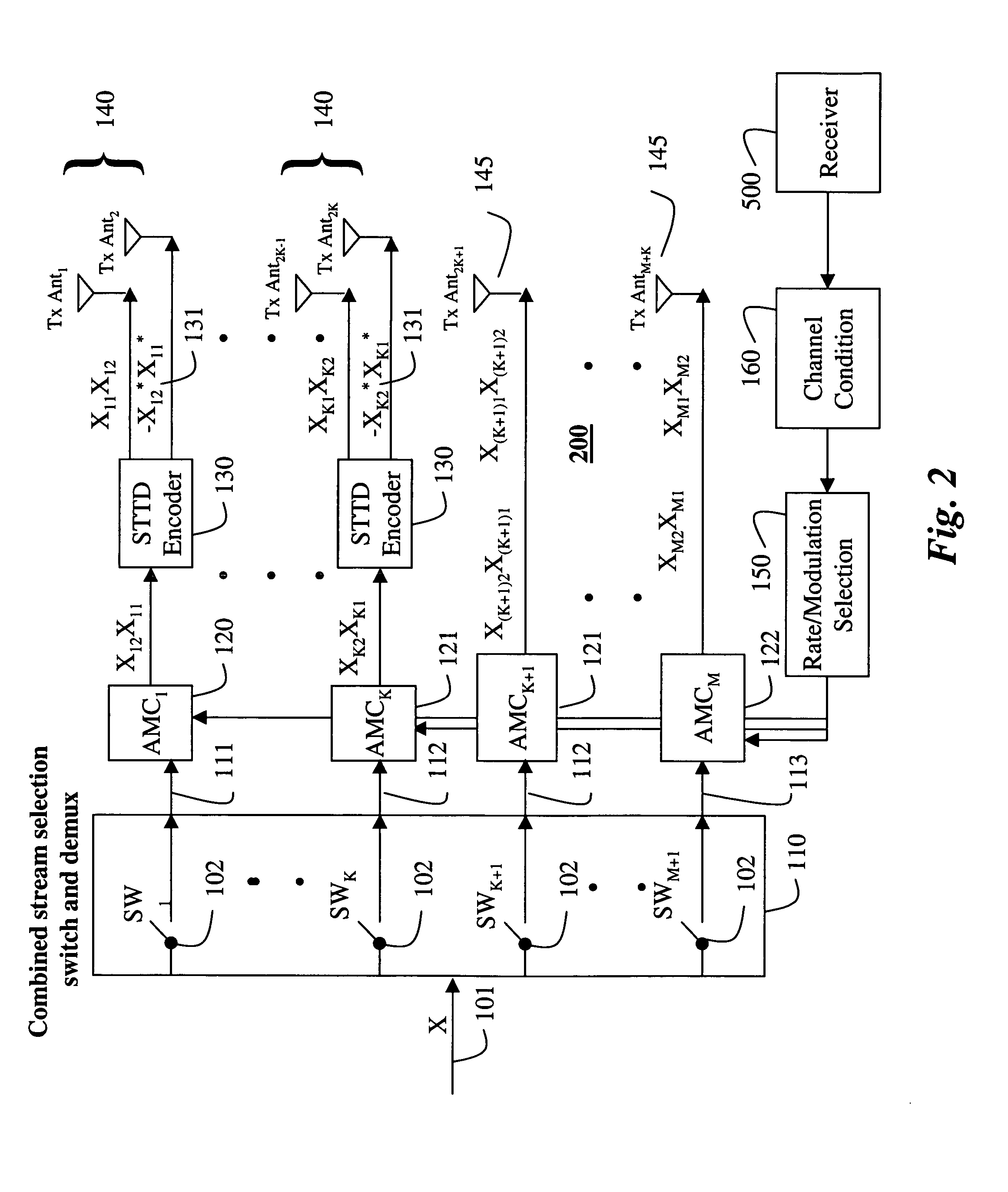Multiple antennas at transmitters and receivers to achieving higher diversity and data rates in MIMO systems
a technology of mimo system and antenna array, applied in multiplex communication, channel coding adaptation, electromagnetic wave modulation, etc., can solve the problem of the number of antenna elements that user equipment (ue) can us
- Summary
- Abstract
- Description
- Claims
- Application Information
AI Technical Summary
Benefits of technology
Problems solved by technology
Method used
Image
Examples
Embodiment Construction
[0016]The invention provides a transmitter that is backward compatible with transmitters that use space-time transmit diversity (STTD) coding to increase a diversity order of a spatial channel. The transmitter transmits multiple independent data streams concurrently, and requires fewer receive antennas than transmit antennas. Adaptive modulation and coding (AMC) is applied to each of the independent data streams to match different channel conditions with required performance, and to achieve a higher system capacity.
[0017]FIG. 1 shows a transmitter 100 for a multiple-input, multiple-out (MIMO) wireless communications systems according to the invention. The transmitter 100 includes M+1 transmit antennas. A first pair of antennas is labeled 140, and the remaining M−1 single antennas are labeled 145.
[0018]A data stream X 101 is provided to a combined stream selection switch and demultiplexer (demux) 110. The demultiplexer 110 partitions the stream 101 into, at most, M substreams 111–113...
PUM
 Login to View More
Login to View More Abstract
Description
Claims
Application Information
 Login to View More
Login to View More - R&D
- Intellectual Property
- Life Sciences
- Materials
- Tech Scout
- Unparalleled Data Quality
- Higher Quality Content
- 60% Fewer Hallucinations
Browse by: Latest US Patents, China's latest patents, Technical Efficacy Thesaurus, Application Domain, Technology Topic, Popular Technical Reports.
© 2025 PatSnap. All rights reserved.Legal|Privacy policy|Modern Slavery Act Transparency Statement|Sitemap|About US| Contact US: help@patsnap.com



